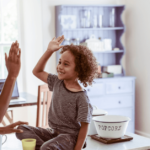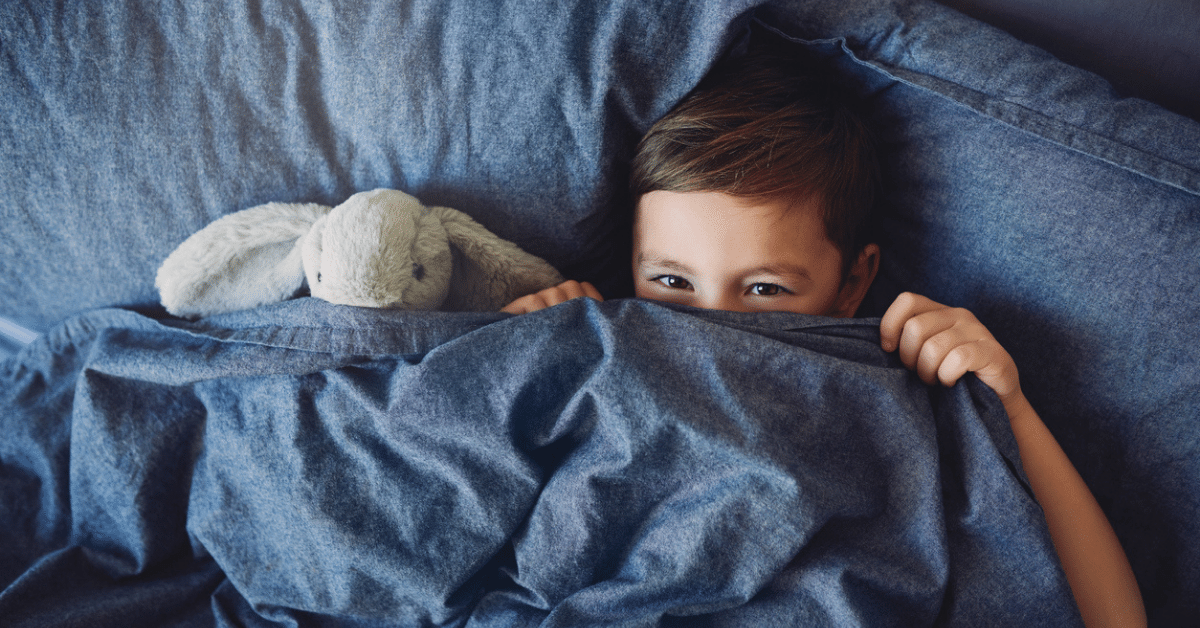
50 Self-Regulation Activities To Empower Your Child To Calm
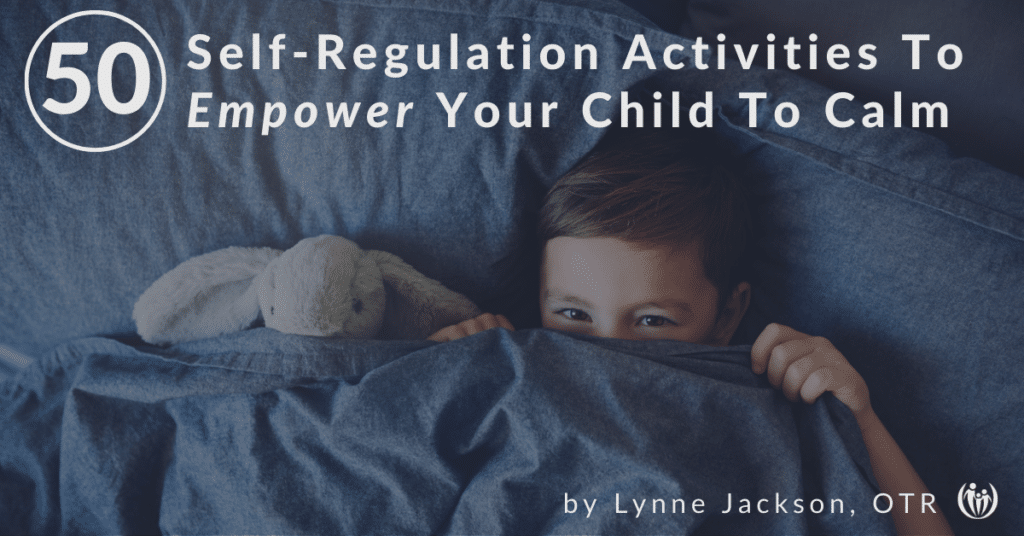
Self-regulation. Emotional regulation. There’s a difference. You might not be sure exactly what those buzzwords mean. But you do want to help your child get to a settled place when their big emotions seem to take over in hurtful ways. It can be so discouraging when you offer to help your child calm down, and they respond, NOOOOO!, and the big emotions get even bigger!!
This post will equip you with the key insights and practical tools you need to help your child feel understood and empowered to work through their big feelings. It draws from my decades of experience coaching parents and working with sensitive, intense kids as an occupational therapist, so whether you have a toddler or a teen, you’ll be more equipped to bring peace to moments of mayhem!
What is self-regulation? How is it different from emotional regulation?
Self-regulation
Self-regulation is the ability to monitor and manage your “arousal state” or energy level. More specifically, it means being aware of your energy level (and basic emotions) that result from either external experiences and/or your internal thoughts. The next step is choosing strategies to adjust your energy level for the most effective response.
Energy self-awareness + healthy coping strategies = SELF-REGULATION
As an adult, this might look like, “I am losin’ it!! I’m going to go take a walk and cool down!” With the strong, rhythmical, calming muscle-joint input of walking as you take a brisk walk, you use up the fight/flight chemistry that had started to flood your system. This helps your brain decide “the danger is over,” and your frontal lobe begins to function again.
That’s self-regulation, and it preps you for the next step: emotional regulation.

Emotional regulation
Emotional regulation is when you understand, evaluate and even problem-solve what you are feeling. Sometimes self-regulation and emotional regulation get mixed up in pop terminology.
Emotional regulation involves the skills to answer these questions:
- What am I feeling?
- What thoughts or beliefs are driving those feelings?
- What is a wise course of action? (i.e., let it go or ideas to solve the problem)
In our example, emotional regulation might be, “Ok, that anger was actually about feeling overwhelmed and out of control. And I’m worried about what’s going to happen with my intense oldest child. Although things aren’t really as bad as they seemed at the time, it would still be good to look for a time to problem-solve this issue with her when we’re both relaxed.”
Energy self-awareness + healthy coping strategies + emotional insight = EMOTIONAL REGULATION
This kind of emotional insight is a complicated and often slow process. The brain will shut the process of emotional regulation down in fight-or-flight because emotional regulation gets in the way of quick, self-protective, fight-or-flight reactions.
So much hurt can be caused by family members who just lash out and move on, with no awareness of what was happening under the surface. If they never learn any new ways to handle intense emotions, the cycle just repeats. (Note: The Bible doesn’t tell us to suppress our feelings but to have an understanding of them so we don’t wound others or ourselves.)
“People with understanding control their anger; a hot temper shows great foolishness.” Proverbs 14:29 NLT
So if you want to learn new skills as you work through the frustrations of family life, remember this: self-awareness → calming strategy → emotional insight is a vital sequence for both parents and kids.

Adults often regulate themselves and don’t realize it
Most of us have a go-to strategy when we need to calm down. Those are really important skills to have as a parent, especially when they keep us from “losin’ it” with our kids!
- Deep, rhythmical breaths.
- A few minutes in a quiet room away from the chaos.
- A phone call to a friend.
- A cup of tea.
- A funny TV show.
These are self-regulation activities, and you probably know which self-regulation activities help you. Often (thanks to a lifetime of experience), we do these things without even realizing they are helping us calm down!
But for our kids’ unstable, developing brains, it’s another story…
What happens in fight-or-flight and how your child’s five senses can help

When your child is having a tantrum, their fight-or-flight system has “hijacked” their brain, and they have lost control. This does not ignore the role of choice, responsibility, and sin in a child’s (or adult’s) outburst. But for all of us, when needs and stress are high and skills are low, it’s very difficult to make a wise choice. Dysregulation is a neurological challenge. Because of that, you can think of your child’s outburst as primarily a brain issue, not a character issue.
In your child’s outburst, the blood flows out of the frontal lobe (where emotions are processed) and into the motor cortex and big muscles to prepare him/her for physical self-protection. Even if there’s no physical danger, it’s the same self-protection system.
When a person is in true danger, they cannot stop and consider, “Hmmm, what am I feeling right now?” That would slow down quick self-defense reactions, so emotional insight shuts down in fight-or-flight.
For a child to grow in emotional regulation and emotional intelligence, they need to calm down enough to get their frontal lobe “back online” and ready to process emotions.
Using the body for self-calming sensory activities

“Motion changes emotion.” Sensory activities do two important things:
- They use up the big muscle fight-or-flight chemistry so that it doesn’t feed an ongoing anxious state.
- They tap into the miracle of our sensory systems to signal an “all-clear.” Life is calm and pleasant, so the danger must be over.
“Ellie” instantly fell in love with her lycra swing, “This is better than a birthday party!” It grew to an interest in aerial silks, which is extremely regulating for her both at home and in weekly lessons. And it was a fun bonding experience when her mom joined her for parents’ night.
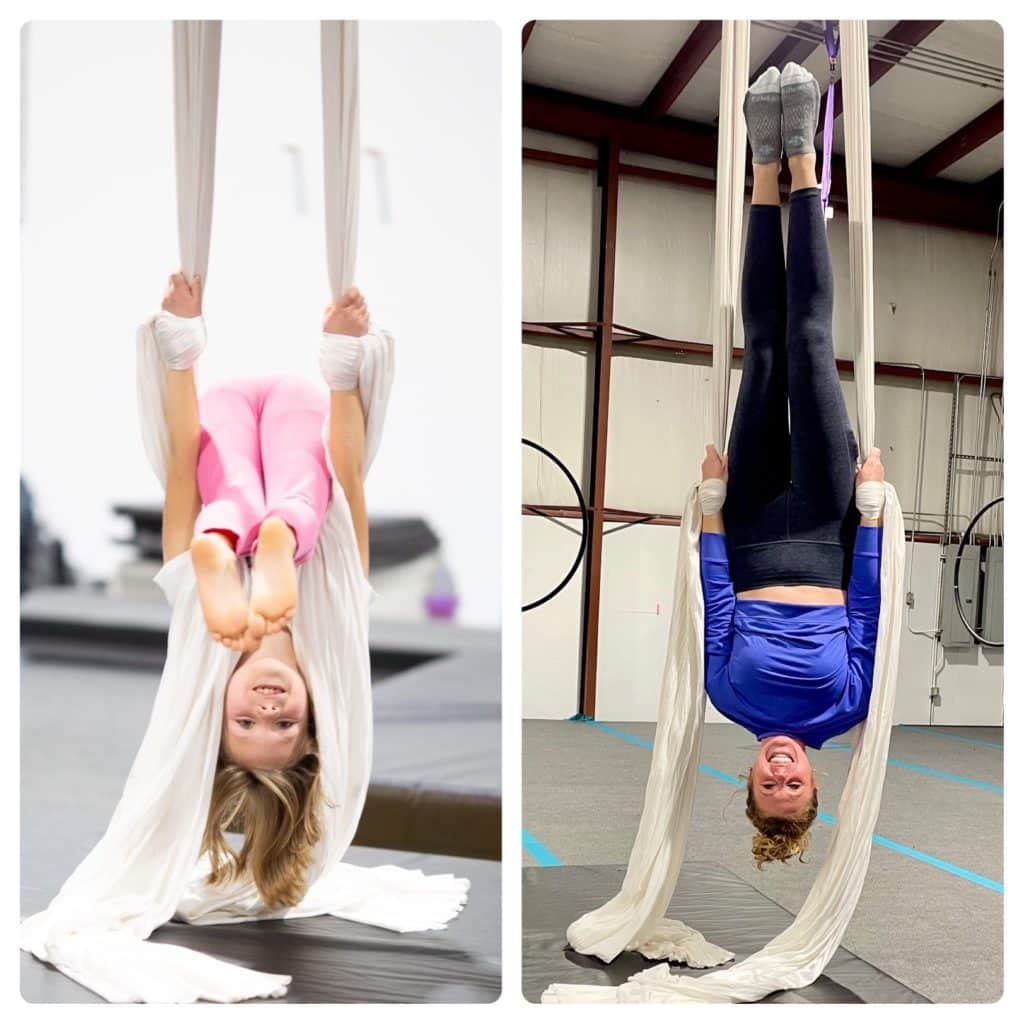
By helping your kids learn self-regulation skills, their frontal lobes can resume functioning. Only then can they figure out what’s going on in them and what to do about it.
Self-regulation needs instruction and practice
For a small percentage of kids, self-regulation comes naturally. For most others, they need a lot of instruction and practice. So don’t be discouraged that your children aren’t emotional regulation masters!
You’ve probably experienced trying to get your kids to talk about why they got upset and made a poor choice. But… their brains were still in fight-or-flight. What happened?
They mostly likely either shut down or got even more upset. The conversation was probably anything but a wisdom-building, emotionally regulating discussion!
That’s why I’m so passionate about equipping you to help your children learn how to self-regulate.
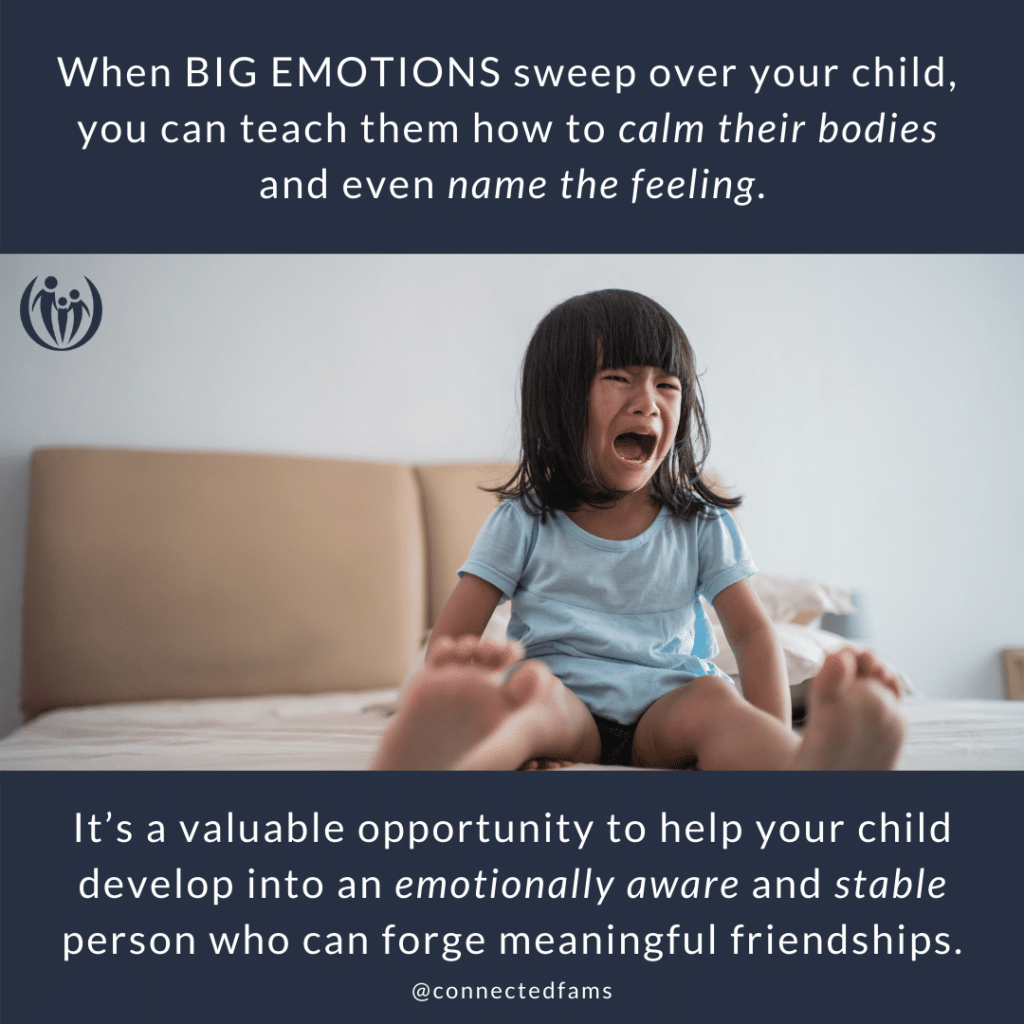
Why is teaching self-regulation important?
Self-regulation is a stepping stone to emotional intelligence. These two skills will impact your kids’ ability to make and maintain lifelong relationships.
This may seem a bit scary if you’ve got a child that loses their cool easily, blames everyone else, and has little awareness about what is going on in them. But there’s plenty of hope!
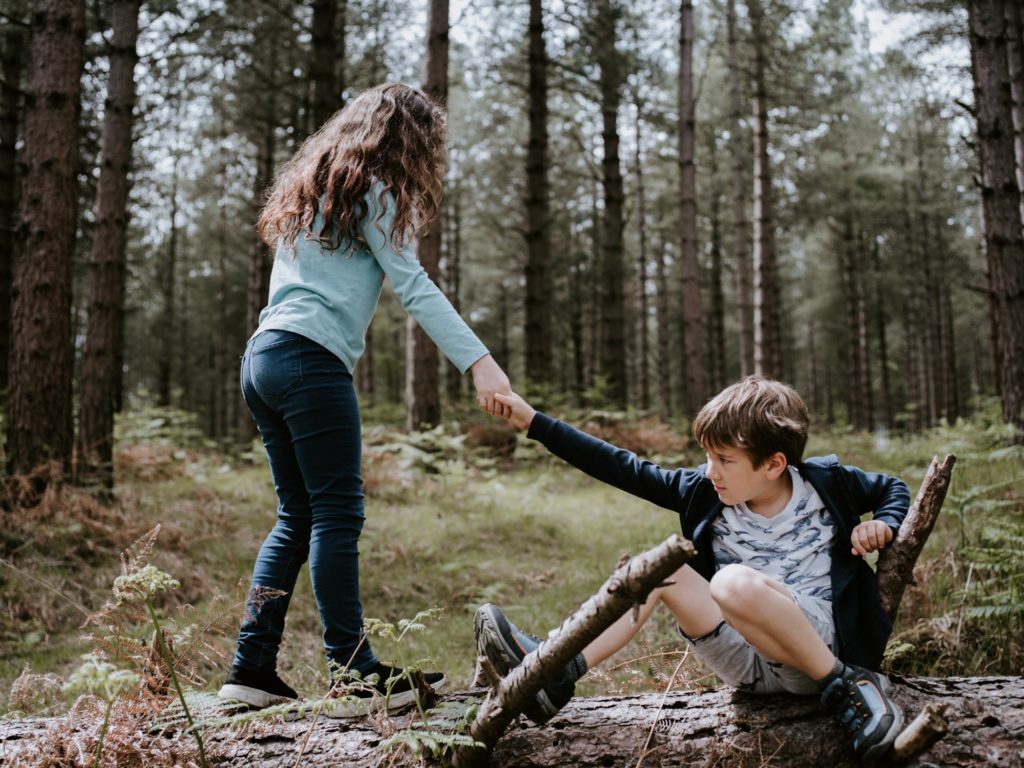
We now understand that all intelligence, both emotional and cognitive, is malleable. In fact, when caregivers teach kids that kindness is not an innate quality but can be learned, bullying decreases! Considering all this, it only makes sense that you give your kids the best support in developing their emotional intelligence.
When big emotions sweep over your child, you can help your child learn to calm their body and even name the feeling. It’s a valuable opportunity to help your child develop into an emotionally aware and intelligent person who can forge meaningful friendships.
What do researchers say about self-regulation?
In his classic book, Raising an Emotionally Intelligent Child, researcher John Gottman, Ph.D. states:
“…science has discovered a tremendous amount about the role emotions play in our lives. Researchers have found that even more than IQ, your emotional awareness and ability to handle feelings will determine your success and happiness in all walks of life, including family relationships. For parents, this quality of ‘emotional intelligence’ – as many now call it – means being aware of your children’s feelings, and being able to empathize, soothe, and guide them.”
Gottman notes that children “learn most lessons about emotion from their parents.”
In Emotional Intelligence, psychologist Daniel Goleman writes:
“This emotional schooling operates not just through the things parents say and do directly to children, but also in the models they offer for handling their own feelings…”
When your kids are most upset, that’s when they need you the most. These challenging situations present a tremendous opportunity to help and equip them to process what’s going on inside themselves. Your effort prepares them for successful relationships both now and in the future.

Do you have a child with BIG feelings and BIG needs?
The Sensitive & Intense Kids online course is a game changer. It’s for YOU.
3 stages to consider when your child is unable to control their emotions
There are three developmental stages to consider when teaching your child self-regulation skills:
STAGE 1: Other-regulation
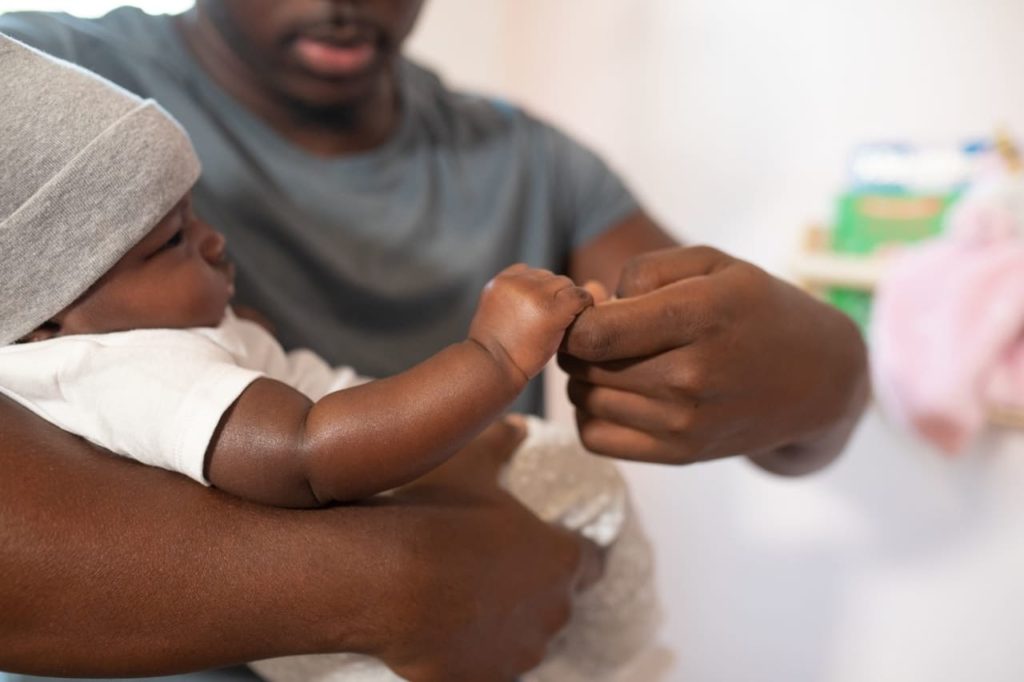
For the first few years, babies and toddlers depend on their caregiver in order to become calm when upset. Parents soothe their fussy, crying infants and toddlers by providing loving sensory input, such as hugging, rocking, providing a pacifier, singing, swaddling, or gentle bouncing. The child regulates, and bonding and trust increase.
There is a beautiful example of other-regulation in the Psalms:
“I have certainly soothed and quieted my soul;
Like a weaned child resting against his mother,
My soul within me is like a weaned child.” Psalm 131:2
The psalmist must have observed the powerful calming of a distressed child leaning on a parent for no other reason than comfort, and the sweet bonding and trust that grows. It is also a beautiful picture of our relationship with the “God of all comforts.” (2 Corinthians 1:3-5) As you other-regulate (or co-regulate) with your child, lean into the sweetness of being a real-life representative of your compassionate, heavenly Father to your child.
STAGE 2: Co-regulation
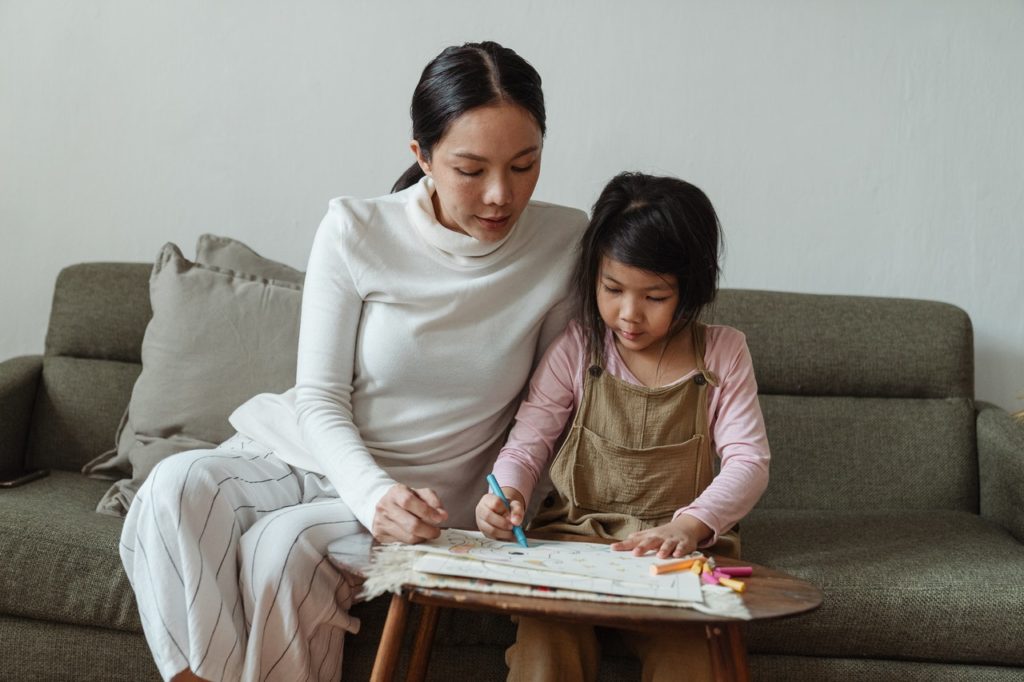
As the child grows, they begin to “co-regulate” with their parents. You and the child participate together in calming activities, and your child absorbs some of your calmness. This might include reading a book before bedtime, taking deep breaths together when upset, or sharing a deep squeeze hug. These activities also develop bonding and trust.
STAGE 3: Self-regulation
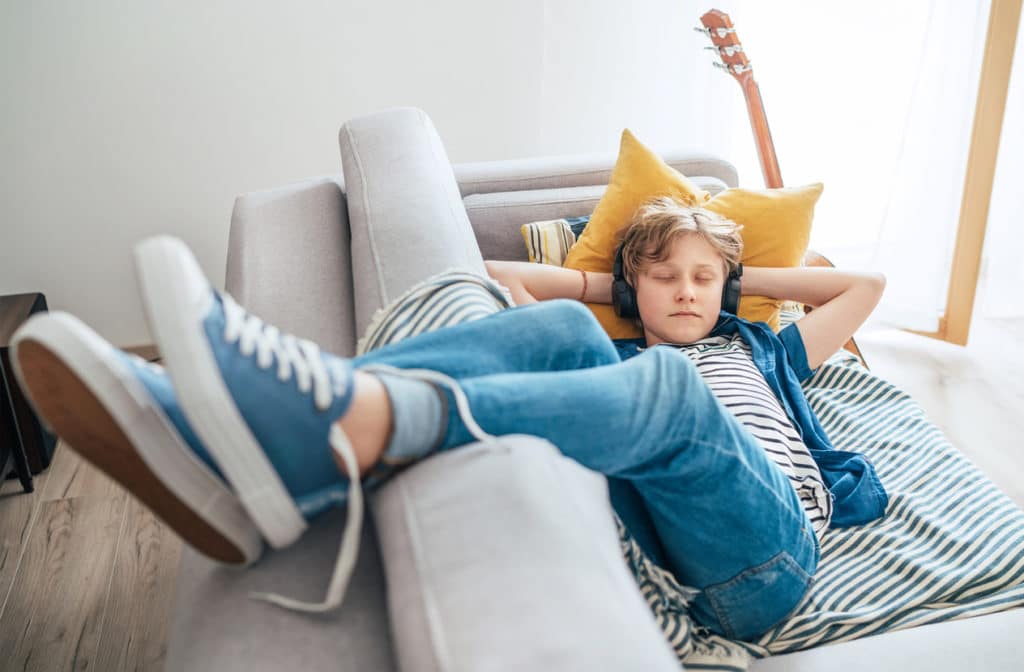
Parents can guide their kids to “self-regulate” by encouraging independent, self-calming strategies and activities. By around age six, typically functioning kids can be taught to notice when their energy or emotional level rises and independently use a strategy for calming.
The younger you start with your children, the better. However, teaching self-regulation helps older kids as well.
3 examples of parents equipping their kids to calm
Other-regulation:
Harvey Karp suggests five classic strategies in his book and video Happiest Baby on the Block. These are other-regulation activities where the parents are completely responsible for the input:
- Swaddling
- Side/stomach position
- Shushing
- Swinging
- Sucking
But older kids can benefit from other-regulation also, especially if trauma or sensory processing disorder are factors.
Jenna was able to help provide regulation for her 11-year-old daughter, who joined their family through adoption, by rocking her in a rocking chair. At first, her daughter resisted, thinking she was too big or too old. Even though she was almost too big to fit on her mom’s lap, she was able to calm with the gentle rocking of the chair and her mom’s soothing voice. Once she was calm, she was better able to articulate her needs.
Co-regulation:
Julie modeled “dragon breaths” (deep inhale through the nose, blowing a long “fiery” exhale out through the mouth) for her 4-year-old son Ty. Soon, he began to join her. He also began to notice there were times when his mom could benefit from a little deep breathing! 🙂
Tom would sit quietly with his son outside his preschool for a few minutes before dropping him off, which solved the problem of regular anxious outbursts.
When Kelly’s teen daughter got upset, they often went for a run together to discuss the conflict because it was calming and much more productive.
Self-regulation:
Marilyn guided her intense 5-year-old son toward self-regulation by offering choices of calming activities: “If Max gets on a roll, hardly anything stops him. But if I intervene immediately when he’s getting wound up, he responds well. I can guide him to do some calm down time in his hammock with music or do some big muscle/heavy lifting activities. He has improved in his reactions, and I am able to relate to him more calmly.”
All the parents mentioned here were able to help each child at different stages on the road to learning self-regulation. They used various calming sensory activities. This strengthened bonding and trust in the relationship, as they avoided escalating outbursts or sending their kids to their room.
What is your child’s self-regulation readiness?

- Does your child respond best to direct soothing input from you? (“other regulation”)
- Does your child do well when you do calming activities together? (“co-regulation”)
- Is your child motivated to avoid outbursts and learn to calm down independently? (“self-regulation”)
In any case, when your child’s behavior starts escalating, calmly offer help within a few seconds—before their brain is flooded with fight/flight chemicals.
Try calming phrases like these:
- “I can see this is bugging you. Let’s talk about it while we do something fun (or have a snack).”
- “Hey Buddy, you’re really upset! I can help you.”
- “What do you need right now? Is there something that can help you feel better so we can figure this out?”
- “What will help your body so your thinking brain can work its best?”
- “You can try to become calm here on the couch with us or go to a private space to help you feel better. Which do you want to do?”
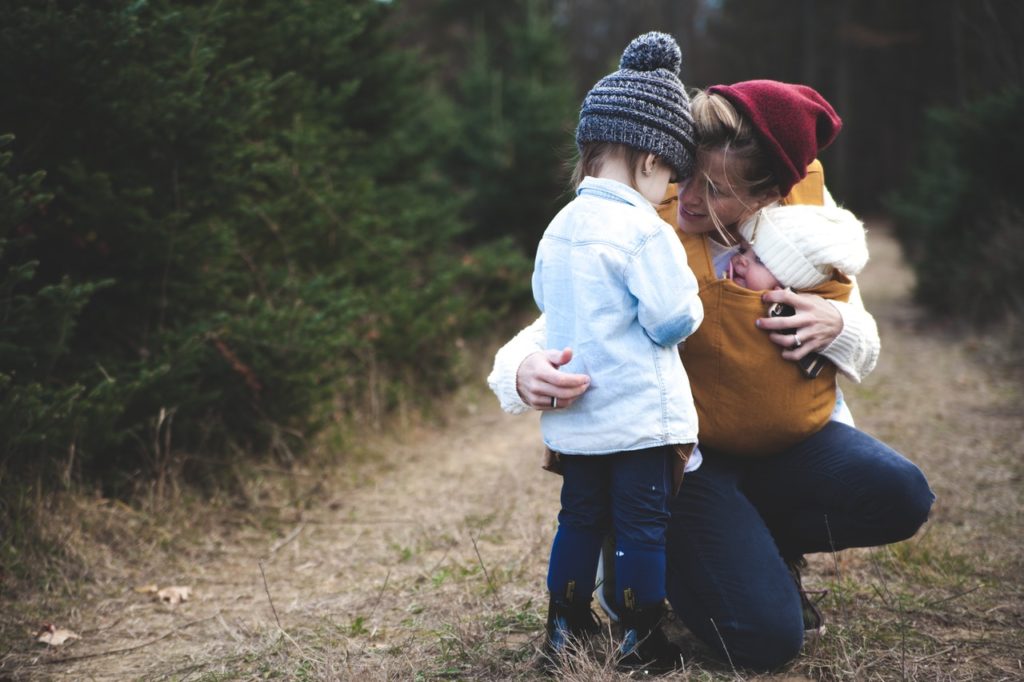
What if my child resists calming suggestions?
You may be thinking, “If I suggest anything when my child is ramping up into an outburst, no way! They’ll flat-out refuse and get even madder!”
You know your child, and you’re probably right.
Anything that comes off to your child as, “You’re getting upset, so you need to do ‘x,y or z’ to calm down” will almost certainly add fuel to the fire. Your child will feel criticized and controlled and perceive you as a threat, not a helper.
The message that kids who are upset often get from parents is, “You’re mad, and I don’t really care what you’re feeling. I just want peace and quiet.” (Ouch. Does that sound familiar?) And what child would ever cooperate with that type of message when they’re hoppin’ mad, right?
No matter what the issue is, an almost sure-fire setup for failure is to try to get kids to do a behavior when they have no motivation and feel manipulated or forced.
One dad’s story of not overreacting
One dad told us this story of how his son is learning to self-regulate by coaching him and not overreacting when he is upset:
“We talk to Gabe about what he wants when he is upset (‘do you want a snuggle?’) and do not overreact when he is very angry. When we don’t over-respond to his outbursts, we can guide him to a quiet place (his room or our bed) where he can look at books, hang out with the cat, or snuggle his stuffed animals until he feels better. Sometimes rubbing his back helps to work out unhappy feelings.”
So here’s the secret… BUILD MOTIVATION FIRST!
Modeling is the best motivation builder
If you want to maximize children’s learning (and cooperation), model this: use sensory activities first with a sincere goal of calming yourself.

Do this on numerous occasions. Let kids know what you’re doing and why. Then self-affirm by stating how helpful it was for you.
Don’t invite your kids to join you until they’ve noticed a difference in you! Then when you invite your kids to participate, they are much more likely to follow suit, and you can affirm them for their wise choices.
Stated more succinctly, this looks like this:
- Model, model, model; invite, affirm…
- Model, model, model; invite, affirm.
And continue to repeat.
1. Create pleasant experiences with the activities

Be proactive and have fun trying some of the activities when everyone is calm. Find out what your kids enjoy.
In order for sensory activities to be calming, they must be pleasant and enjoyable. You can use the term “body treats” when you talk about these self-regulation activities.
(Side note: Consider letting your kids know ahead of time that if they fake conflict or anger to get a calming toy, snack, or activity, it will no longer be an option. 😉 And although activities should be pleasant, avoid screens as a calming activity because the transition off will be stressful.)
Gradually you can begin to offer activities when your kids are slightly angsty. You might start before a situation (i.e., a transition to the car) or a time of day (i.e., late afternoon before dinner) that often escalates into an outburst.
2. Prepare places and supplies ahead of time
Ask your child to select a “comfy spot” to calm down when upset. You can even use a pop-up tent and stock it with pillows, stuffed animals, and a few other favorite (non-screen) items just for that purpose.
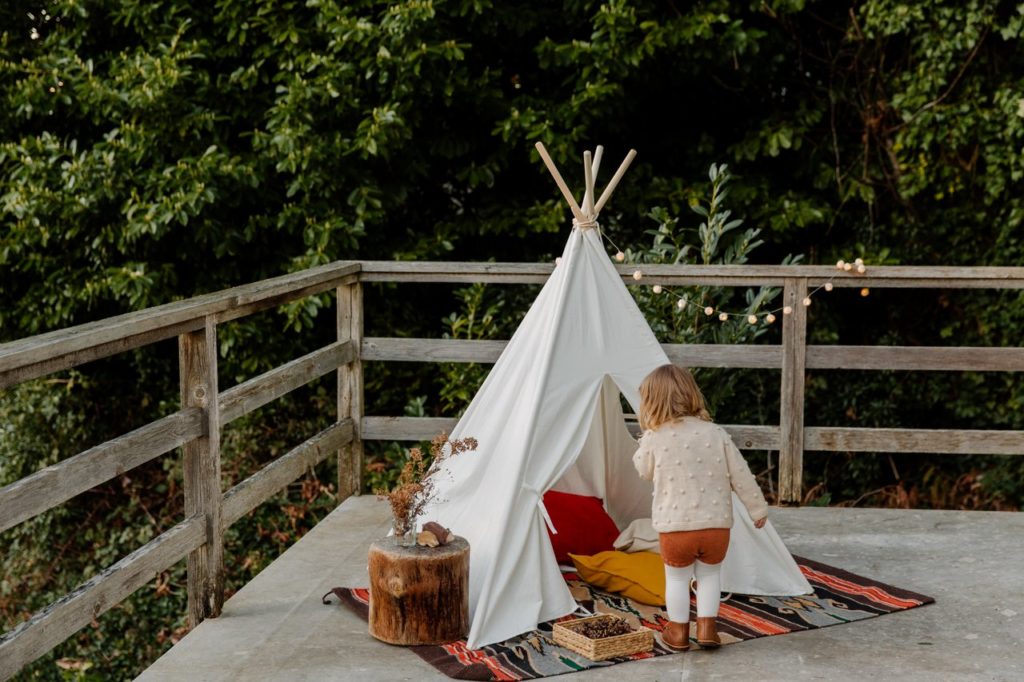
For younger kids, prepare picture choices by taking photos of your child practicing calming activities and printing them. Then during misbehavior or conflict, show your child a couple of options and let them choose. The fewer words you use with an upset child, the better.
3. Watch for the times when your child naturally self-regulates. Affirm.
For example: “I noticed you were having a lot of arguments when playing with Legos, and you decided to go for a bike ride. It seemed like that really helped you feel better. You paid attention to what your body needed! When you came back, the two of you had a great time together.”
Affirmation is powerful! When you encourage kids with their small successes, they are usually eager to do more.
You could share Proverbs 15:18, “A hot-tempered person starts fights; a cool-tempered person stops them.” Then encourage your child in how they are learning to be a cool-tempered person. You can talk about how that’s a blessing to others and why it’s important.
Are you ready to hear some practical ideas you can start using today?
50 calming activities using each of the senses
If you feel out of ideas when life gets messy, don’t worry. We’ve compiled a list of calming activities you can keep in your back pocket. These self-regulation activities help kids use their bodies to calm their brains. They help your child start the emotional regulation process (especially when you remember to model, model, model; invite, and affirm!)
50 Calming Activities Printable PDF
Check out our FREE downloadable and printable PDF so you never run out of ideas!
Many of the activities on this list involve motion. A favorite phrase to use that kids can remember is: Motion changes emotion. Feeling sluggish? Feeling irritable? Get your body moving! Feeling anxious and fidgety? Try some slow deep pressure. How your child uses motion to change emotion can help them learn to self-regulate in a healthy way.
Mouth / oral activities
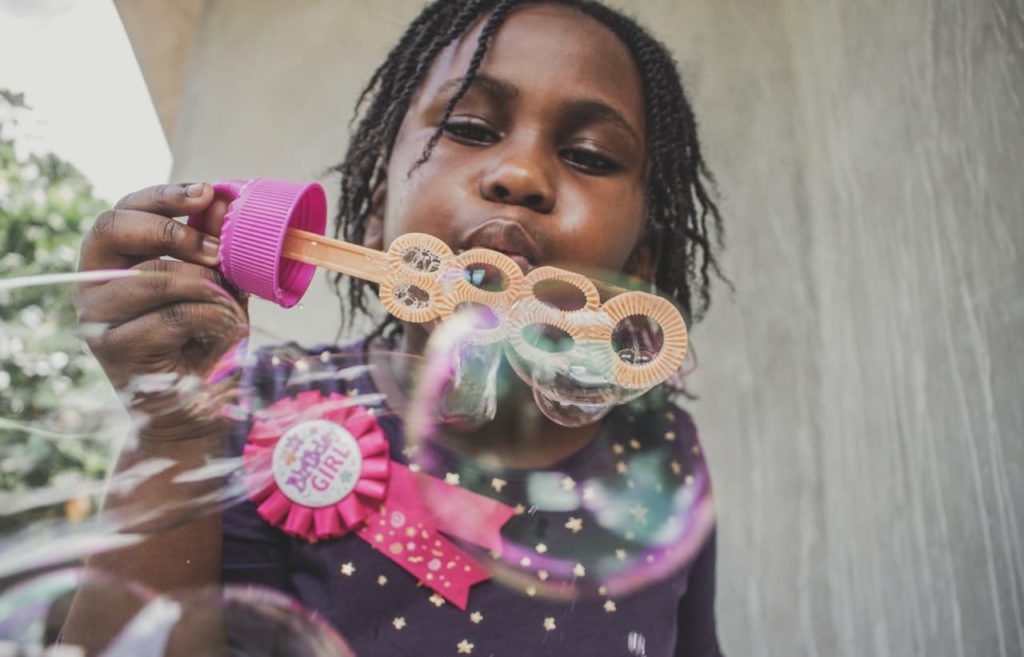
1. Deep breathing, AKA dragon breaths
2. Cold water in a bottle with a long curly straw
3. Gum (or a popsicle) can be a powerful brain calmer
4. Frozen or dried mango slices
5. Fruit smoothie through a straw (suck is calming)
6. Blow on a pinwheel or blow bubbles with a bubble wand (mimics deep breathing)
7. Put a few drops of soap in a bowl and blow bubbles through a straw, or herd “sheep” (cotton balls) with a straw.
8. Blow on a party blower or kazoo (the vibration is calming)
9. Pretend your finger is a candle and practice blowing it out
10. For older kids – “Let’s grab some chips and salsa, and we’ll talk this through.”
A coaching client reported:
“DJ was crying and he specifically asked for the vacuum cleaner activity (an activity in the sensory input video) and said, ‘It helps me feel better and not so sad.’ After I did it he was so much better and moved on easily. It’s fun to see our kids utilizing the Connected Families tools. When one of our kids gets upset, their siblings often try to help them get unstuck by recommending they read a book, take deep breaths, or walk around, telling them ‘motion changes emotion.'”
Skin/touch activities
(Many of these activities are included in our sensory input techniques video.)
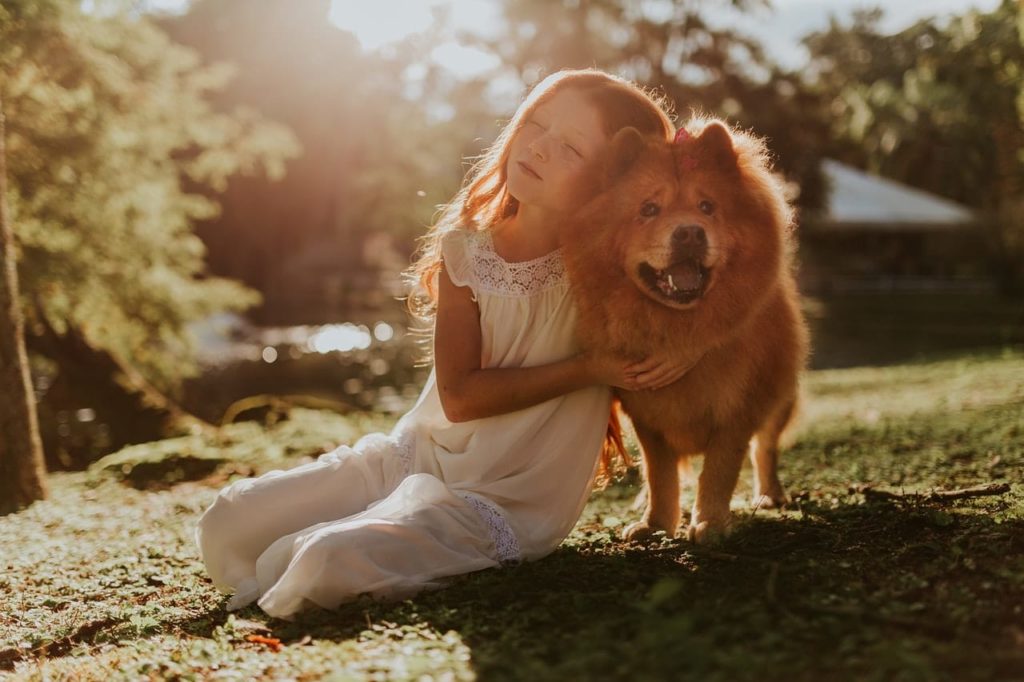
11. Offer a hug
12. “Squish sandwich” – put pillows or couch cushions under and on top of your child as they lay face down on the floor and apply pressure. You can even start to talk about whatever is troubling them while they are in this position.
13. Try a weighted blanket
14. Some kids love it when you lay on top of them (of course, be careful to regulate your pressure).
15. Rub lotion on each others’ hands/skin (or use coconut oil if the child dislikes lotions)
16. Make a “calming basket” with fidgets, squishy toys, or calming stuffed animals, and let your child choose things from it. Try searching the internet for “weighted/warmable stuffed animals” meant specifically for self-regulation.
17. Play with the family pet or take a cat/dog cuddle break
18. Back scratches or back rubs before bed
19. Paint each other’s nails
20. Finger painting
21. Braiding or playing with each other’s hair
22. Playdough
23. A tub or shower
24. Roll the child up in a blanket, then pull gently to unroll
Movement-based (vestibular/proprioceptive) activities
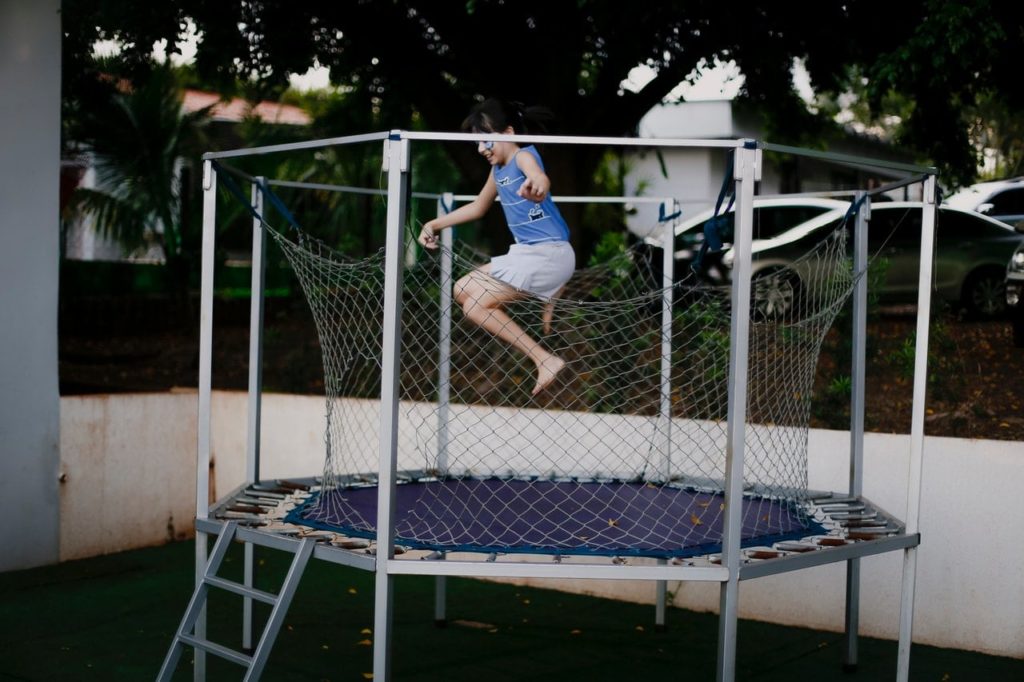
25. Do push-ups, or relays together by doing a bear walk (on hands and feet, face down), crab walk (on hands and feet, belly up), or wheelbarrow walking.
26. Jump on a trampoline
27. Ride a bike around the block
28. Shoot some hoops/play catch/nerf frisbee
29. Play balloon “volleyball”
30. Swing on a swing set
31. Work out on a treadmill/elliptical, etc., if you have one, and talk about how you feel better. Then invite your child to try it. (Please follow safety guidelines if your child is on a piece of your fitness equipment.)
32. Go to the park and do some climbing
33. Turn on kids’ favorite music and have a dance party
34. Run up and down the stairs (how fast can kids find the object you hid downstairs?)
35. Make an obstacle course including a collapsible tunnel
36. Bounce on an inflatable exercise ball (or kids’ hop ball)
37. Bungee “pogo” jumper
38. Make a big pile of pillows and have kids jump onto them from a step stool or couch
How one dad used movement to help his son self-regulate
“After calming down from an early morning ramp up, I was able to speak to Jared while he was in bed. During our conversation about what happened he said, ‘It was extra hard to try to be normal this morning.’ I asked, ‘When it’s hard to act normal in the morning, what makes it hard?’ He replied, ‘I feel squirmy.’ I immediately asked him if he wanted to run on Daddy’s treadmill, and we were up doing that in the next 30 seconds. He ran a half mile and it was the start of what would be an amazing day!”
Visual activities

- Calm down jar
- Color independently or together with your child. This may help less verbal kids identify feelings and wants in their picture.
- Art, art, and more art
- Look at books with beautiful pictures/illustrations. You could even buy a book of scenic photography (or look at online photos) and make up stories that could fit the pictures.
- Build a fort as a safe space that also limits visual stimuli
- Bubbler toy or a lava lamp in a dark room
Auditory activities
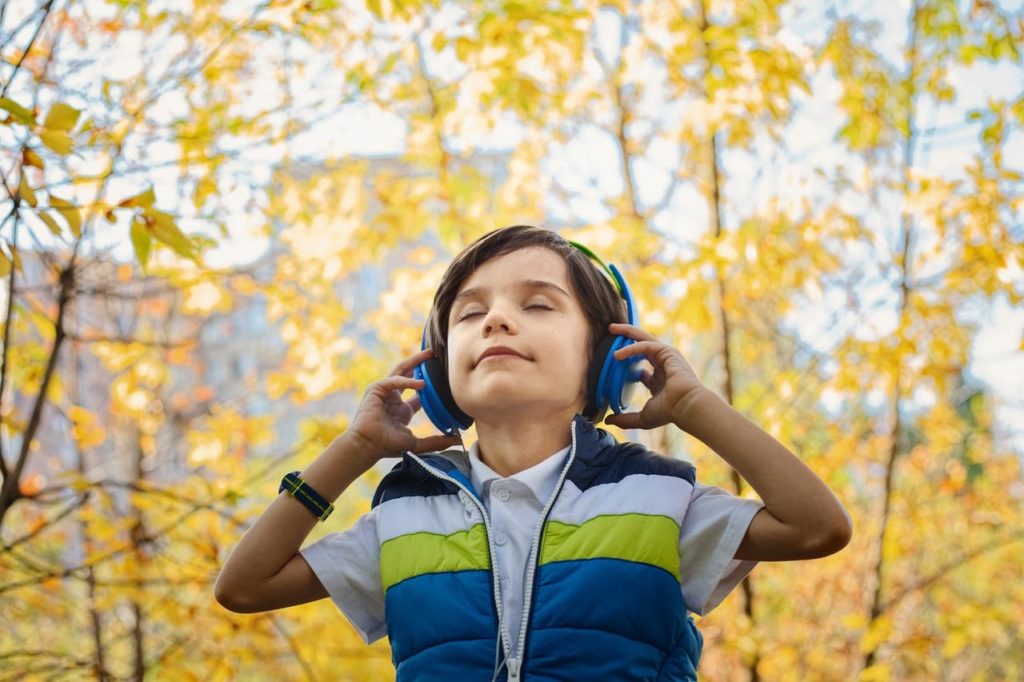
- Listen to your favorite music (use earbuds or headphones if it helps)
- Sit outside to listen to the birds and the breeze
- Hum or sing
- Use a couple of kazoos (for both humor and vibration to the inner ear) and pretend to “talk out your conflict” through the kazoo with lots of expressions and gestures.
- Use a white noise machine (on a calming sound) while looking at books
- Musical instrument box – kids feel in control of their auditory environment when they make music
50 Calming Activities Printable PDF
Check out our FREE downloadable and printable PDF list of activities!
What to do after your child successfully self-regulates
When your child calms down, it’s important not to just move on (“Glad that’s over!”). Instead, be sure to help your child process their big emotions effectively.
This is the first step of EMOTIONAL REGULATION!

Ann Layne, Ph.D. and licensed clinical psychologist specializing in the treatment of anxiety disorders, states:
“Research shows that kids who are sent to their rooms to calm down without then processing what was going on in them, aren’t practicing emotional-regulation, they are practicing emotional suppression. That causes more problems later.”
Processing big emotions to gain emotional regulation skills
After your child is calm, here’s how it might go as you can discuss the key questions for emotional regulation:
- What am I feeling?
- Parent/Caregiver: “Would you say you were more mad or hurt when Aidan didn’t let you play the game?”
- Child: “MAD! He’s mean! I don’t like him!!”
- Parent/Caregiver: “Would you say you were more mad or hurt when Aidan didn’t let you play the game?”
- What thoughts or beliefs are driving those feelings?
- Parent/Caregiver: “It’s really hard to feel left out, isn’t it? When that happens to me, I don’t feel very important. And it hurts my feelings. ”
- Child: “Yeah. I guess I did feel kind of hurt. He thinks he gets his way just cuz he’s bigger.”
- Parent/Caregiver: “It’s really hard to feel left out, isn’t it? When that happens to me, I don’t feel very important. And it hurts my feelings. ”
- What is a wise course of action? (i.e., let it go or ideas to solve the problem)
- Parent/Caregiver: “What do you want to do about it?”
- Child: “I dunno. He should get in trouble.”
- Parent/Caregiver: “I think you can solve this. I could go with you and make sure he listens to you this time. You can tell him how you feel about being left out. Then you guys can figure out a solution you both are ok with. What do you think? Are you ready to talk to him?”
- Child: “Sure. If you go with me?”
- Parent/Caregiver: “I’d love to help you both figure out a respectful way to talk about this.”
- Parent/Caregiver: “What do you want to do about it?”
“Feel and Deal”: How we learn emotional regulation
These kinds of questions above are valuable for equipping a child for a lifetime of productive responses to anger. These aren’t just self-regulation (calming oneself) anymore. Now, you’re getting at the deeper insights into emotional regulation.
The phrase “Feel and Deal” (“What am I feeling and how do I want to deal with that?”) can be a simple prompt to remind both parents and kids about this important process of emotional regulation.
(If you’re looking for more resources, Zones of Regulation or the 5-Point Scale can also help calm an upset child by helping them assess and describe their level of distress.)
Self-regulation and emotional regulation require perseverance, but it’s worth it. You are preparing your kids for the inevitable stresses and challenges of life. These are truly skills that can last a lifetime!

Do you have a child with EXTRA needs?
Parenting isn’t easy, but when you’ve got an extra INTENSE or SENSITIVE child with big feelings… it’s even harder.
The Sensitive and Intense Kids online course will equip you to parent well, even with these unique kiddos.



